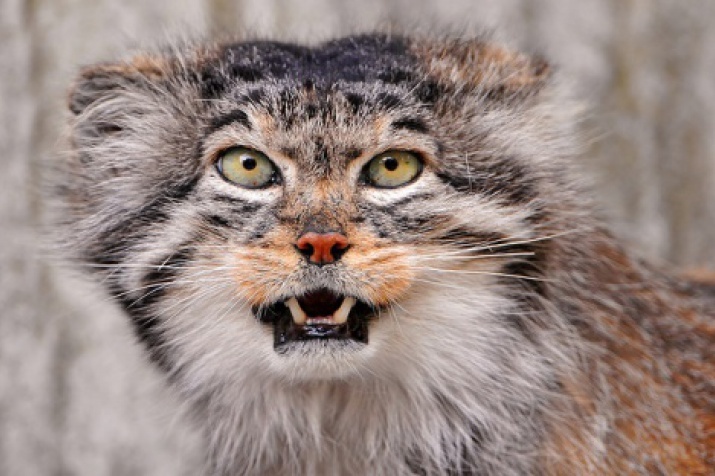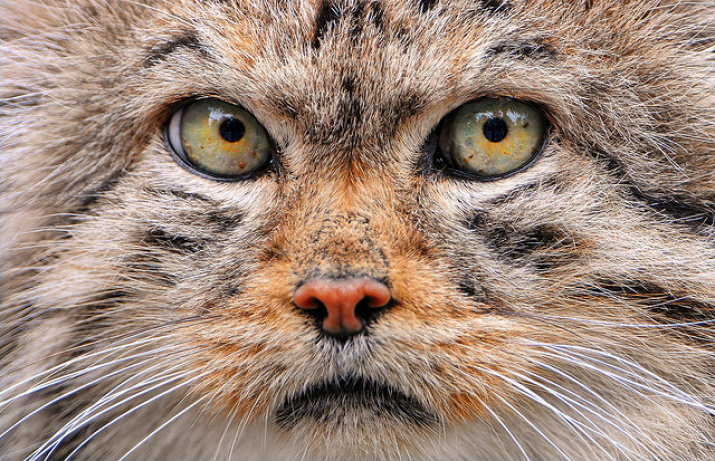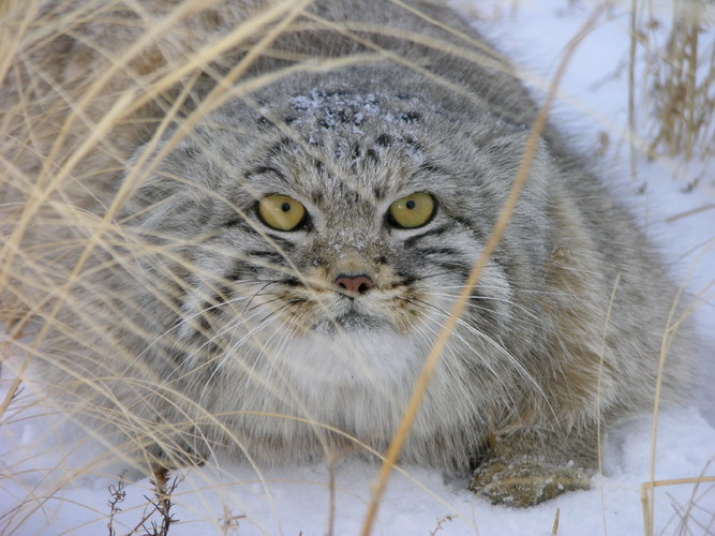About the Pallas's cat
Under protection:
3rd category- rare breed on the periphery of the area.
Manul is listed in the Red Books in Russia, Kazakhstan, Kyrgizia, Mongolia and China.
It is one of the least studied wild cats in the world with the area of habitat from Caucasus to east Mongolia.
Population of manuls difficult to define. Even though the area of habitat has not changed in the last few decades, the population continues to decrease across the whole area. In recent years manul disappeared from the Caspian region and the East of their habitat in China.
Population of manul in Russia from 1990 to 2000 was 3000-3650 species.
Manul is included in the Potential Threat category of Lower Risk in the Red List of animals under the threat of extinction. In other countries and regions Manul is categorised as a higher risk, including the highest risk in its Asian areal.
Where manul lives:
Armenia, Azerbaijan, China, India, Iran, Kazakhstan, Kirghizia, Mongolia, Pakistan, Turkmenistan, Uzbekistan.
In the last 10-15 years manul almost disappeared from the open steppes and its habitat is now in isolated areas.
The habitat of manul spreads from mountains to stony deserts and steppes in Asia and South Siberia. In Russia manul can be found along the North-East border with Kazakhstan, border with Mongolia and China- in Altai, Tuva, Buriatiya and Chita.
Main habitat of manul is in steppe and semi-desert areas with patchy grass-shrub vegetation, rocky areas and low mountains. Main conditions for manul' s habitat are rocky outcrops and vast shrub areas where they can build nests and hide. Manuls live in strong continental climate with temperature dropping to -50 in winter. They can't move in deep snow so they don't live where snow is deeper than 20cm.
Size
Manul is a small-size cat, similar in size to domestic cats. They are normally 50-62cm long with a tale length of 23-31cm and body weight of 2.5-4kg. The do seem bigger than that due to their fur and a long tale. Male manuls are much bigger than female.
Manul has a big-size head and flat face with widely spread ears. They have a light-coloured face with a distinctive pattern. They have yellow eyes and unlike other cats, their eyes remain round in bright light. Manul has long hair on their cheeks. Their legs are relatively short, tail is thick with black tip. Manul has the thickest fur among all wild cats. According to the data, on 1cm sq. on their back there are up to 9000 hairs, each about 7cm long. Manul's hair is light grey with white tips which creates an illusion that manul has snowflakes on its fur. Manul has black stripes on its back and tale and black long hair in the corners of their eyes.
Its unusual appearance led to some theories that manul is relative to Persian cats who also have very fluffy fur, round features and quite unusual face shape for cats.
Behaviour:
Manul leads sedentary lifestyle and is predominantly active in the hours of darkness and early morning and sleeps during the day. Manul builds home in rock crevices, small caves, under rocks, and in old burrows of marmots, foxes and badgers. It's fur pattern helps manul to be unnoticed when hiding. Manul is the slowest among the wild cats.
Manul can't run for a long time and can be a victim of a human or a big dog. Sometimes they turn towards the hunter, sit down or lie on it's back. Manul hides from its attackers in rocks. When attacked they make a quiet deep rumbling or sharp snorts.
Food:
Manul mainly feeds on rodents and pikas: gerbils, voles, gophers, hamsters, and chukar partridge. Sometimes they catch young marmots, hares and small birds. Manul diet also consists of insects.
Reproduction:
Information on manul's reproduction in nature is quite scarce. The breeding season begins in February-March, pregnancy lasts 74-75 days, kittens appear in April-May. Manuls usually have from 2 to 10 kittens, usually 3-5, they are born blind and completely helpless. Only female manuls educate the kittens. At the age of 2 months kittens weigh around 500-600, reaching the adult size at the age of 6-8 months.
Lifespan:
The average life expectancy of manul is 11-12 years.




